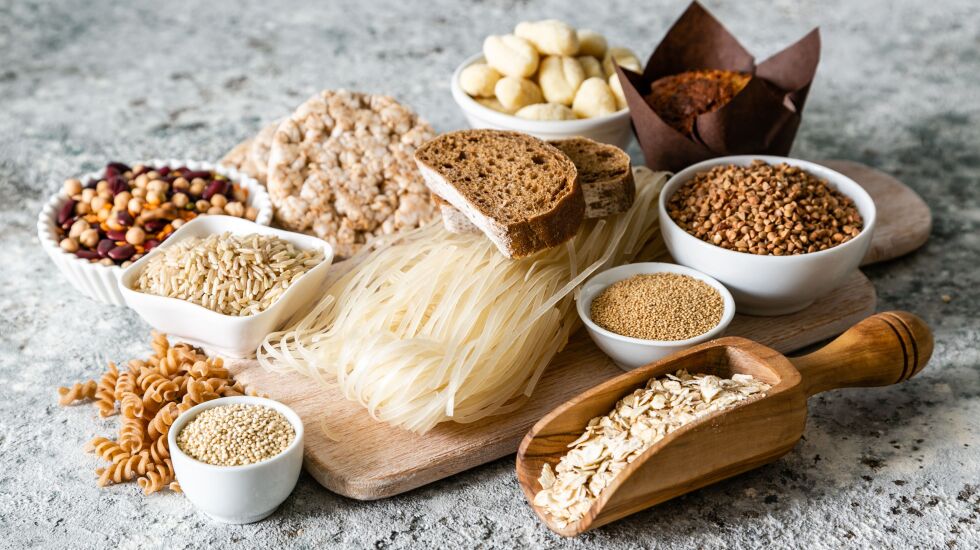
The gluten-free food market in the United States is expected to grow by $1,175.34 million from 2022 to 2027, according to Technavio, a growth rate estimated at 8.25% by 2027.
It might have seemed to some a fad butt has proven to be long-lasting and continues to thrive.
And people not on a gluten-free diet might once have dismissed gluten-free products as not something for them, but the tides are changing. Many consumers are looking for ways to improve their health and wellness and consider these products an alternative.
But are these foods actually healthier?
A recent Consumer Reports National Research Center survey found that 63% of Americans thought a gluten-free diet would improve their physical or mental health.
What gluten-free is
The gluten-free diet is an eating plan that excludes gluten — a family of proteins found in wheat, barley and rye. This diet is only necessary for those with celiac disease or gluten sensitivity.
Celiac disease is an autoimmune disorder that causes the body to attack itself after exposure to gluten. This immune response can damage the lining of the small intestines, making it hard for the body to absorb nutrients.
Only 1% of the population has celiac disease, while 6% of the population has gluten sensitivity, in which eating gluten causes stomach discomfort.
Hopping on the bandwagon
People without gluten sensitivities are buying more gluten-free products, especially baked goods. Gluten-free baked goods can be difficult to replicate at home since gluten-free flour can be gritty and dry.
Consumers generally are looking for more natural products, foods made with ingredients found in nature, and they often view these gluten-free products as healthier. Many are rejecting dyes, added sugars and preservatives and looking for alternatives.
Gluten-free baked goods use other types of grains for flour, like amaranth, millet, arrowroot, corn and flax.

Studies show 20% to 30% of the U.S. population follows a gluten-free diet or has tried it. Food manufacturers are cashing in on this trend by catering more to shoppers who do not have problems with gluten but are looking for health benefits from gluten-free foods.
Something to watch for
Are gluten-free products naturally healthier?
There is no proof that gluten-free foods are better for you, and they often cost more.
Also, according to Harvard Medical School experts, gluten-free foods often aren’t fortified with vitamins and minerals such as folic acid, iron and other nutrients like regular foods containing gluten. And they can have less fiber and more sugar than their standard counterparts.
Some consumers think going gluten-free will help them lose weight. But that’s a common misconception. Most gluten-free packaged baked goods and breads use rice, tapioca and sorghum flours, which contain more carbohydrates and calories than wheat flours and can lead to weight gain.
A healthier way
If you need to go gluten-free for health reasons or want to try it, there are a few things to consider when planning your diet.
It’s healthiest to eat foods in their natural form that haven’t been processed. Smart choices include fruits, vegetables, nuts, seeds, lean proteins and gluten-free whole grains. These should be the base for your diet.
Once you get into packaged foods, everything is processed, whether it is gluten-free or not. Read ingredient labels. Look for lists that are short and sweet. The longer the list, the more processed it is. In general, it is best to cut down on processed foods.
Pay attention to the first few ingredients when looking at gluten-free labels. Is this product made primarily of rice flour? If so, put it back on the shelf. Does it have gluten-free whole grains like brown rice, teff, millet and quinoa? These are the healthier gluten-free grains and contain fiber and nutrients. Check to see whether a product has been fortified with vitamins and minerals.
Picking foods from among so many available choices can be overwhelming, but create a quick mental checklist, and you’ll get used to thinking this way. If you find a brand that meets these criteria, look at their other products. Chances are those are good choices as well.
If you have celiac disease or gluten sensitivity that causes stomach discomfort, it is essential to avoid all gluten. If you think a gluten-free diet is right for other health reasons, consider eating foods in their natural state and reading labels carefully.







